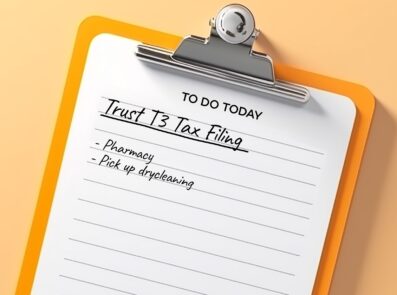By: Jeffrey Miller
With few exceptions, the financial fallout from the COVID-19 pandemic is also hurting not-for-profit organizations and charities.
The outlook is particularly bleak for those not-for-profits reliant on membership fees such as tennis and golf clubs and similar organizations where people pay a fee to pursue an activity of common interest.
The forced cancellation of numerous fundraising events is proving a devastating blow to many charities that rely of these funds to provide their services.
Each individual case is different, but for every not-for-profit and charity, the impact of the COVID-19 pandemic is basically about cash flow.
The organizations have to guess at their window of opportunity and try to calculate the minimum amount of money they need to survive between now and when that window closes.
My overarching advice to all my not-for-profit and charity clients is two-fold:
First, reach out to your constituents. If you are membership based, do your members want the club or organization they support and/or enjoy to be around next year and the years to come? If you are a charitable organization, reach out to your donors as you want to ensure your organization will be around and capable of providing services to your constituents when the restrictions under the pandemic are lessened.
And second, apply for every one of the emergency government grants that are available and applicable to your organization.
Some not-for-profits have charitable status but that is no guarantee of financial support. For example a camp that may have an under-privileged kids’ program, what happens if the camp is not allowed to open this summer? It is unlikely that people be willing to donate for a program that isn’t going to happen yet the camp with still have maintenance and operating costs this summer.
That’s just one example of how a not-for-profit can suffer despite having charitable status and the ability to issue tax receipts.
Different organizations rely on different revenue sources.
For some not-for profits and charities, the revenue picture is generally clear and relatively easy to measure. For others, it isn’t. They might make the bulk of their money over a short, specific period. For example, if all memberships renew May 1st how many members may choose not to renew this year? Or organizations that have an annual campaign such as The United Way, which has a surge of donations in December as people want to take advantage of the tax receipt. If people are still hurting financially by the end of the year, what impact will that have?
In addition, there could be pressure from members who have paid for services in advance and who may want refunds or discounts if the services for which they have paid are no longer to be provided.
If, for example, a charity runs a May fundraising golf tournament, it’s possible that entry fees have already been collected. Less likely if the tournament is in July. Either way, if the tournament doesn’t happen, will people want their money back or will they let it go towards the greater good?
A public golf course is dependent on golfers paying as they play so every day people don’t play is a day of lost revenue.
But whether membership-based or public, sporting facilities need to be maintained and they need staff to do the work.
Government Grants
Charities and not-for-profits are all eligible for the Temporary Wage Subsidy of 10% on wages paid to a maximum of $1,375 per employee and a total of $25,000 per organization.
They can also can take advantage of the Canada Emergency Wage Subsidy (CEWS) which reimburses the organization 75% on wages paid to a maximum benefit is $847 per employee each week. This grant is designed to help employers who have experienced at least a 15% reduction in revenues in March and 30% or more in revenues April and May because of the pandemic.
Those organizations with work to do can obviously benefit from CEWS but even those that have closed up shop completely might consider applying if only to keep a few valued employees on the books. Employers will still have to have the funds to initially pay the employees and even after, they will have a cost of at least 25 per cent of the wage bill, so obviously it depends on an employer’s ability to do so.
The organization may also be eligible for the Canada Emergency Business Account (CEBA) which provides an interest free bank loan of $40,000 of which $10,000 will be forgiven if $30,000 of the loan is repaid before December 31, 2022. To be eligible, the total payroll of the organization must between $20,000 and $1,500,000.
Another opportunity is the Emergency Community Support Fund, which is in recognition of the valuable work done by much of the charitable and not-for-profit sector.
It’s a $350-million fund administered through intermediaries such as the United Way, Community Foundations Canada, and the Red Cross and is intended to train volunteers who will deliver to seniors and provide transportation services for people with disabilities.
And there is the $500-million Culture and Sport Emergency Support fund that some in the sector might take advantage of.
We don’t know all the details yet, but charities and not-for-profits are also included in new commercial rent subsidy measures.
This is a rough period and it’s likely that some charities and not-for-profits – especially those without an existing financial cushion – may not survive.
But again, they all should be reaching to members and potential donors, taking advantage of the available government funds and getting the best strategic advice possible.
Jeffrey Miller is a GGFL partner.






